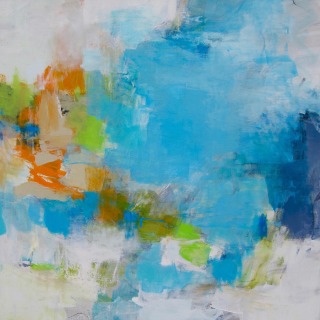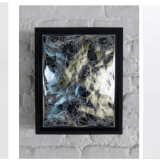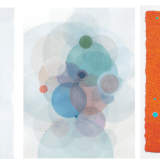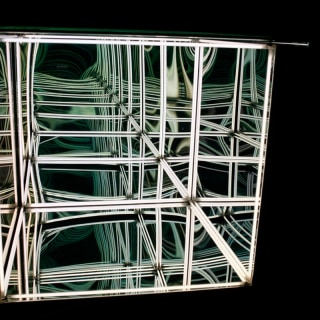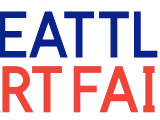
When we refer to “reality” we are usually referring to what we think is our real objective existence. It is real and not false or imaginary. We primarily observe our reality because of the presence of light. But just because we observe light reflecting off something can we assume that others will observe it the same way? If different observers see something different what is the reality of the object?
It is common for us to be affected by what we observe. When we look at a painting we have an experience that might change us emotionally or intellectually. The painting stays the same regardless of how we change. But what if you could change the art just by looking at it in different circumstances? With the art I have been exploring for a little over two years it is impossible to separate one’s individual personal subjective experience from the object because no two people can experience seeing the same thing at the same time. What is the reality of this art?
I have been calling these works light drawings because the surface is literally “drawn” (incised) by hand. However, I have concluded that light drawing is only a partial definition. Some people have called them sculptures. They are a combination of the actual surface, very narrow grooves in a sheet of plastic that has been coated with a diluted matte medium, and the light reflected from the surface and grooves. This doesn’t sound very unusual for two-dimensional art. What is different is that they are interactive and appear three-dimensional. The light reflecting from the grooves is something that cannot accurately be described without referring to it as what it actually (really) is, an abrasion hologram; something that somehow makes the piece greater than the sum of its material parts.
When I first started to make these pieces there were many questions that needed to be answered. I have resolved a good number of these, particularly the technical ones. I am now able to make them so they can be seen in normal lighting and I can make them much larger. Though I have chosen, so far, to focus on circles, other configurations are now beginning to attract my attention. However, the primary question about the relationship of the viewer to the object remains, in addition to the question of where these pieces fit into the contemporary art discussion. There is a lot to think about and I cannot imagine running out ideas and completing this exploration any time soon.














